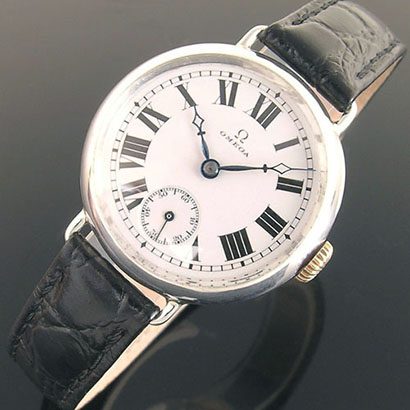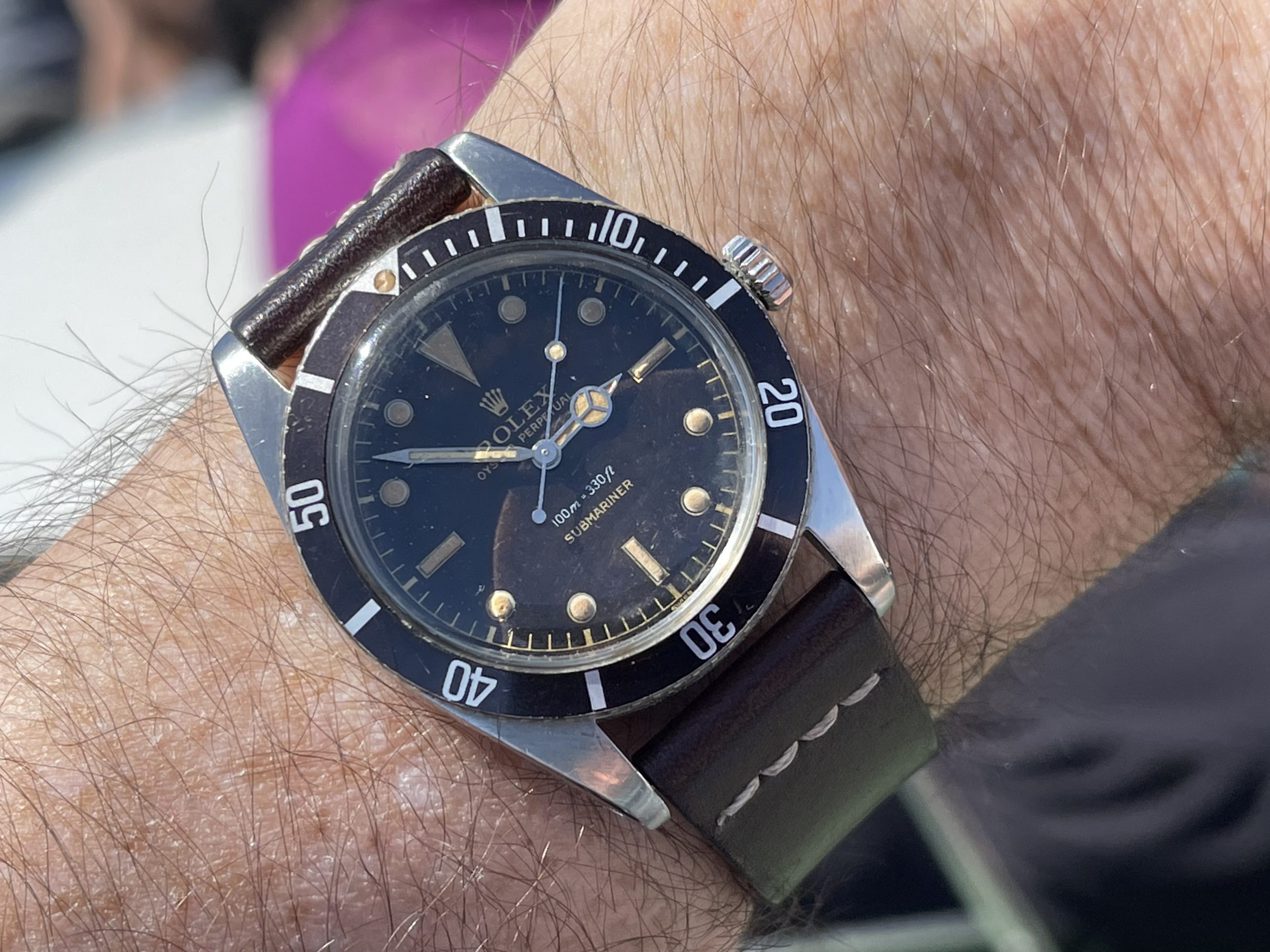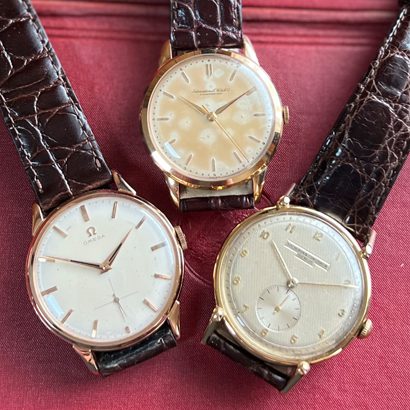PRESERVING VINTAGE WATCH VALUE:
WHEN TO RESTORE THE DIAL
To restore or not restore? This is an endlessly debated question in the vintage watch world and a question we get asked often.
While the majority of collectors these days have both feet firmly in the “no” camp, preferring untouched originals, the debate rages on. But why? Well, as with most things related to the conservation of a historical item, it depends on the piece and the purpose and type of restoration. The implications of restoration are, just like most things to do with vintage timepieces, nuanced and complicated.
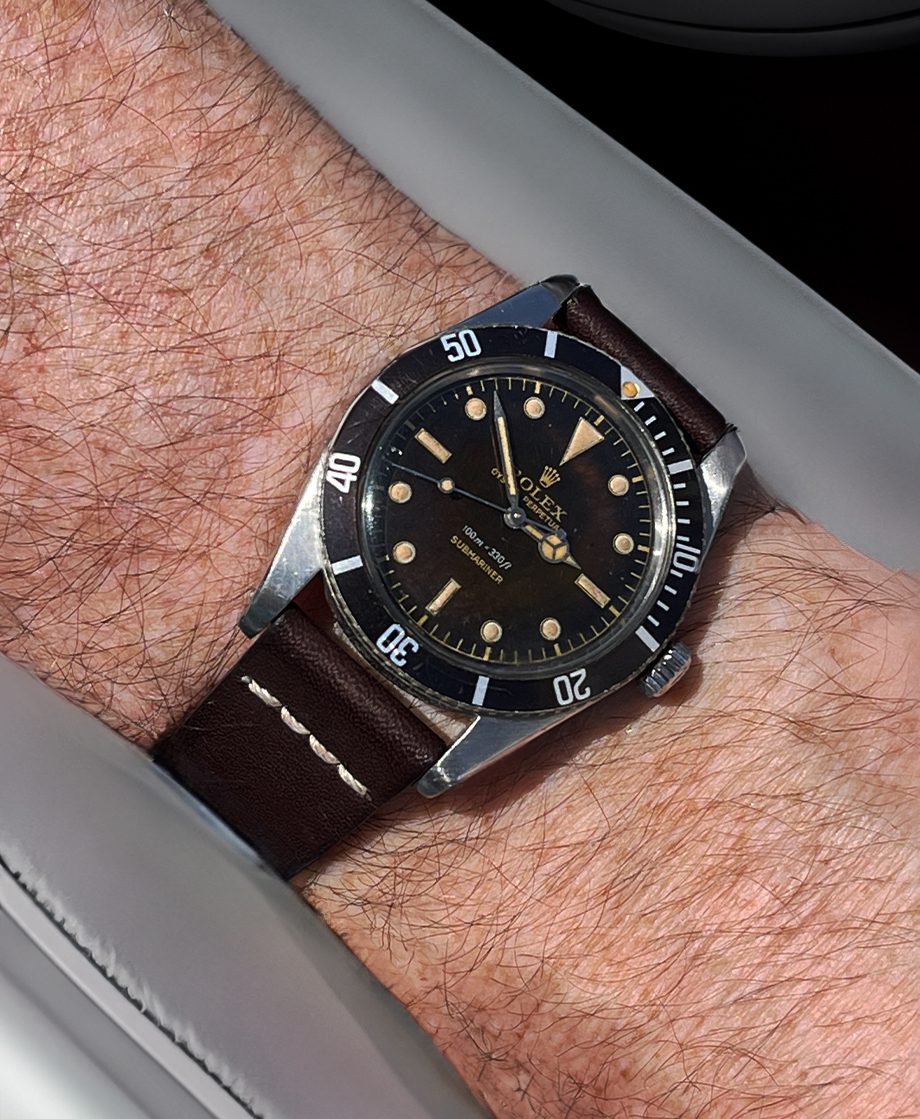
The Significance of the Dial
In the case of dial restoration, many collectors will tell you that the dial is the most valuable part of any vintage watch. In most cases, a pristine dial with minimal patina, no blemishes, and zero scratches, can fetch a considerably higher price than dials with some degree of wear. Except for some specific examples where patina is often preferred, such as the tropical dials of a Rolex Submariner.
So, while an original dial in good condition will, of course, be everyone’s preference, the grey area for debate comes into play for pieces that have some wear, of varying degrees, and the owner wants to preserve value and originality but also wants to balance that with functionality. And that, my dear friends, is the problem – conservation and functionality are often mutually exclusive.
Most collectors today agree that what is worse than a non-pristine but original dial is one that has been redone or “refinished”. That means someone, usually not the original manufacturer, has modified the original dial. These modifications range from a simple re-lume to an outright repainting of the dial. Vintage watches with repainted dials can be bought for a bargain as they are quite difficult to sell and mostly unwanted.
It wasn’t always like this. Years ago when the vintage watch market wasn’t as hot as it is today it was more acceptable in the industry to do “upgrades” on the dial. For example, watchmakers have been updating the luminous compound on vintage dials for decades. A customer would complain to his watchmaker that the dial had faded over time making it difficult to read at night, and the watchmaker would happily re-apply a new compound without another thought.
The goal of this was functionality. This trend went on for a long time until collectors began rejecting such watches as the luminous paint was often poorly applied, evidence that the watch was no longer original. The aim of restoring a vintage watch should always be to restore it as near as possible to its original state. Any evidence of restoration will negatively affect its value, particularly in the high end of the market.
Now that the market has become more aware of such badly executed restorations, watchmakers are using new restoration techniques to restore dials in different ways.. These have become so good that it is often very difficult, even for an expert, to tell a restored dial from a good original.
In the case of re-luming dials, period-correct luminous compound is now used to apply to dials that are damaged or have been poorly re-lumed in the past. Similarly with watch hands that have been badly re-painted or where the lume has been destroyed by moisture.
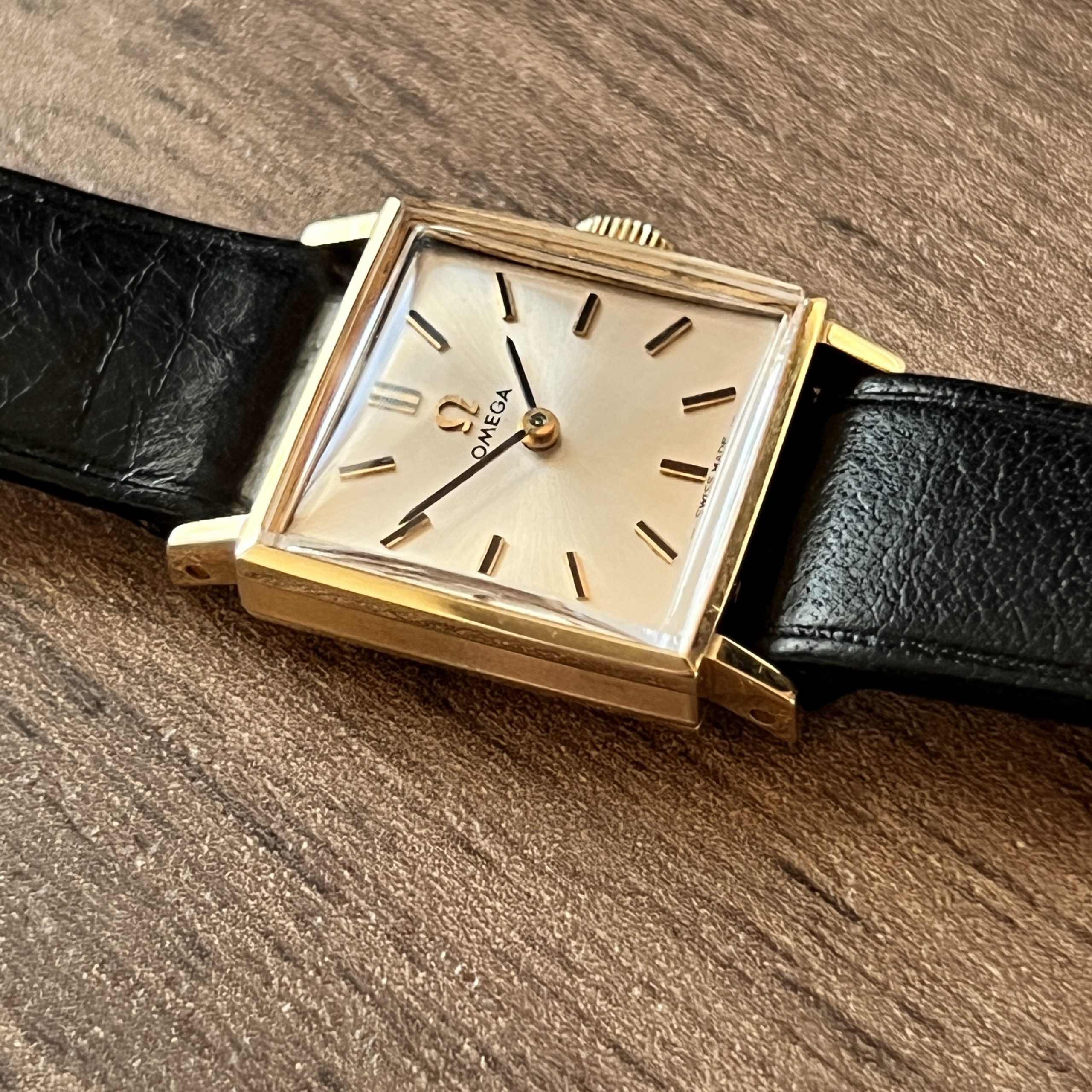
Factors Influencing Dial Restoration
There are some situations where restoring a dial is almost unavoidable. For example, if a watch is water damaged. If water enters a watch it is not only bad news for the mechanism, but it will damage the dial too. Water can affect the dial lacquer, damage the lume and even the dial furniture, such as the batons used to indicate the hour.
Watch dials age gradually due to light exposure. This happens at a variable rate depending on the level of exposure, the humidity and temperature. This may take the form of some gentle fading at one end of the scale, to being almost illegible at the other. This deterioration may look like crazing, pitting, fading, local staining and scratches.
Also, smoking which was much more commonplace in the 1950s and 1960s, would not only damage the owner’s lungs but also their watch. It is not often appreciated that Rolex, Omega, JLC and most other brands would often replace the dial when servicing a watch. This would happen for the examples given above, or when a dial became otherwise damaged through general ageing. Early dials were often more prone to this due to poorer manufacturing techniques.
So, many vintage watches with supposedly clean, original and unrestored dials have in fact been replaced years ago when the watch was serviced – manufacturers often restore dials during service, even today.

Different Strokes for Different Folks
Some collectors, and niche markets such as military watch collectors and the higher end of the market, often prefer vintage watches with unrestored dials showing some signs of ageing that retain the original character of the watch. These collectors can seem amazingly tolerant of dial staining, pitting, scratches and fading. They state an original unrestored dial forms a large part of the value of a vintage watch. But while this preference remains true for these smaller sections of the market, it is certainly not true of the main market, especially the lower-end value pieces.
‘Main market’ vintage watch dealers today will confirm that the majority of the market prefers fully restored watches, which includes the dial. At Vintage Gold Watches, we estimate around 90% of buyers prefer watches with restored dials rather than ones with degradation through ageing. A typical collector’s tolerance for such deterioration of the dial will be much higher than that of the typical ‘main market’ buyer and as such, the market for such watches is smaller because of the laws of supply and demand. This tends to even out the price and differences in value.
Determining the Need for Restoration
There are several factors one should consider when weighing up the case for and against dial restoration:
Purpose and context
The first port of call when considering whether to restore a dial is the purpose of the restoration and its context. For example, a person with a family heirloom timepiece that is worn as a functional watch, and the owner has no intention of selling it, would be a good candidate for respectful dial restoration. Because restoration will prolong the life of the watch to be used and enjoyed as a functional timepiece and maintain its good condition for future generations.
However, the same watch in the hands of a collector who wants to preserve its originality and value, and may wish to sell it in the future, is likely to refrain from restoring it. Only a watch with extreme dial damage would be restored by most collectors in this situation.
Model and value
The brand, model, era and value of the watch is also a huge factor. A rare very old timepiece will almost always be preferred in its original state as this is a high-value vintage watch and originality here is key. Whereas an entry level value (around £2 – £3,000) Rolex or Omega from the 70’s is likely to be much less rare, and be bought and sold within the main vintage market, where buyers prefer the watch to look clean and undamaged as it will be worn as a functional watch, in most cases.
Type of damage
The next factor is what type of damage the dial has and how bad it is. In the case of the heirloom owner, some fading and patina may not be an issue – until it gets to the point where it’s hard to read the dial, in which case the watch is no longer functional. The collector, on the other hand, will embrace wear, fading or patina, and in some cases such as the Rolex tropical dials, it is actually a sought-after feature and will increase sale value.
Cost
There can be times when the cost of the restoration surpasses the monetary value of the watch. In the case of the family heirloom watch, this may be insignificant compared to how much sentimental worth it has to the family who has owned it for generations.
Before you make a decision either way we would always recommend getting a trusted expert evaluation and assessment before deciding on restoration. They will be able to advise you. Be careful who you ask – of course, most vintage watch restoration companies will tell you to restore, as that is their frame of reference. Additionally, an expert watchmaker isn’t necessarily a master of refinishing, so look for an expert in the field.
At Vintage Gold Watches we have years of experience of high-quality respectful restorations, some of which can be seen on our website. We have a highly skilled team of expert watchmakers, watch case restorers and watch dial restorers who we know are guaranteed to do the finest work. We believe in conservative restoration, only doing so when it is really needed. If you’re looking for advice on whether to restore your watch dial feel free to get in touch, we would be happy to help.
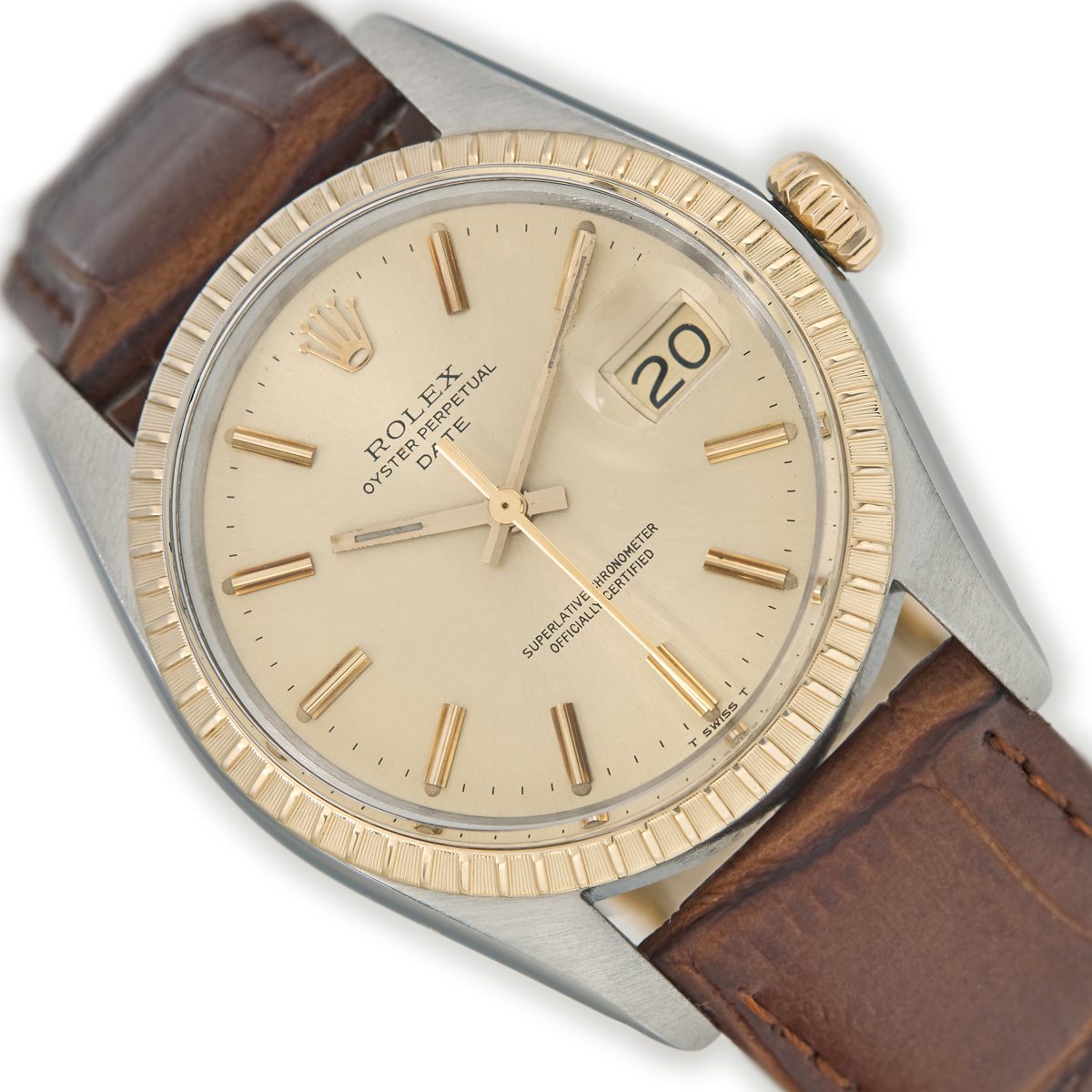
Beware of Lesser-skilled Restorers
Unfortunately, not all dial restorers are of the same ilk and we have seen results that leave the watch looking overly new, unattractive and unnatural. Such as glaringly bright luminous markers radiating as if they were manufactured last week. And on occasion, the dial is kept original with only the hands having been exchanged, which looks even worse.
Watch restoration is an incredibly skilled craft, almost a black art. There are a limited numebr of highly skilled dial restorers in the UK, they’re techniques and practices are shrouded in mystery, usually to protect their declining industry and high worth.
When a watch is restored it is disassembled into its constituent parts and sent away to specific restorers who will work on different elements. So, if you are having your watch restored its parts will probably be shipped off to several different specialist restorers – one for the dial, one for the movement, one for the case, and so on. Restoring a dial usually involves removing it from the watch, stripping it of the paint and lacquer, and then the restorer will rebuild the dial as per the manufacturer’s processes and design.
If you do choose to go down the dial restoration route it is absolutely critical that you carefully choose which vintage watch restorer to work with. Of course, reputation is key. If you can get a personal recommendation even better. The most important factors are that you have trust in them, ideally through previous transactions, and they can tell you how the restoration will take place and show you examples of restorations they have done.
The difference between a quick restoration and one that is really done well is that you shouldn’t be able to see the difference afterwards.
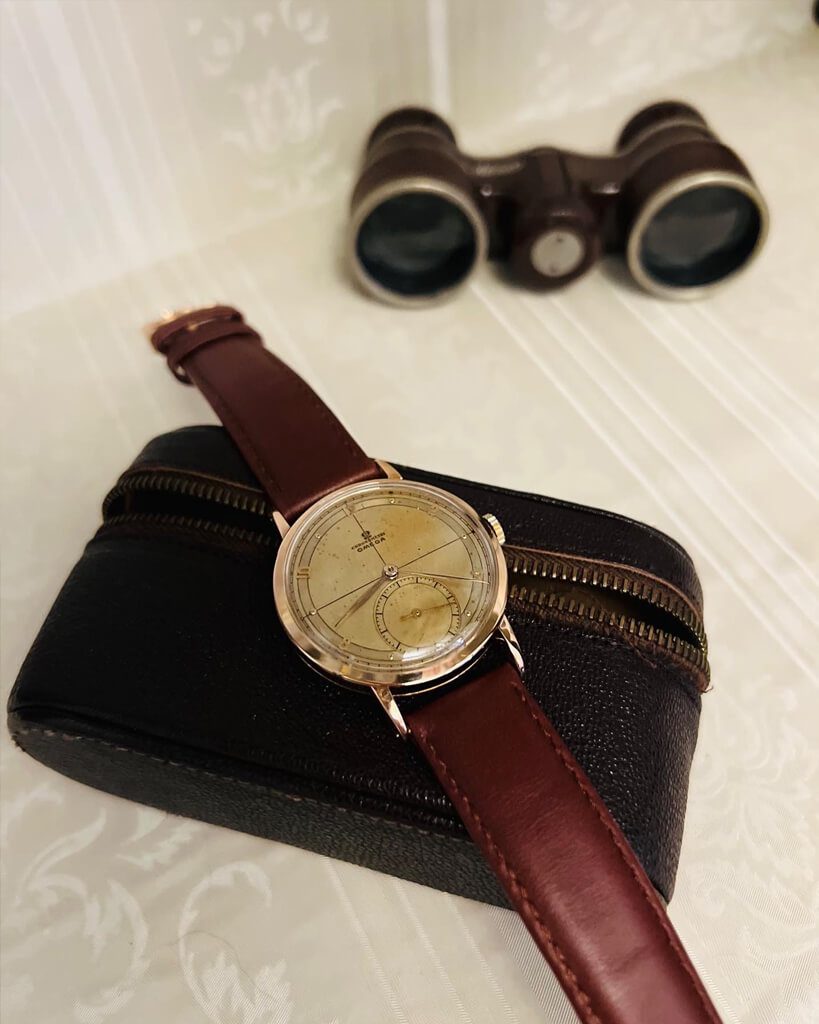
How to Spot a Restored or Replaced Dial
If you’re currently in the market to buy a vintage watch and want to avoid buying one with a restored dial there are a few tricks you can deploy. However, determining whether a dial is original or ‘restored’ is not an exact science. We recommend doing lots of research about the particular vintage watch model. To be able to spot a restored dial, you need to be familiar with what a genuine dial for a particular watch looks like. The key is to observe lots of original dials.
After that there are a few things to look out for:
1) The dial
Using a magnifying glass check for the proportion and alignment of the details, like the logo, minute tracks, hour and minute markers. Check the finish of the dial. A high-gloss finish is a sign that it may have been redone, as original dials will naturally oxidize over time. Also, compare the overall condition of the watch versus the condition of the dial. If the watch case or bracelet shows significant wear, but the dial looks excellent, this is a big sign that dial restoration has been done.
2) Typography and printing
Look out for inconsistent font types and spacing, especially in the same area of the watch. Incorrect numbering, un-crisp tracks and indices are all give-aways of a dial restore. In some cases, missing ‘Swiss’ / ‘Swiss made’ text at the 6 o’clock mark. Most regular restorers will not invest time in putting them back on, as it involves an additional print process.
However, note that misprints do happen. One well-known and accepted example is the Omega Speedmaster 220 bezel (technically part of the case, and not dial) that can be found on the reference 145.022-69.
3) Luminous markers
If your watch has luminous hour markers and indices, check whether the lume is consistent. If there is lume on the indices, they should be on the hands as well – otherwise, they won’t serve their purpose to show the time in the dark. Additionally, if your watch uses tritium lume (popular in the ’60s to ’70s) it should no longer glow either too brightly or for too long in the dark, as tritium has a half-life of 12 years. It should also not look too neon or white but have a yellowish or brownish tint due to age.
4) Logo and crown
Finally, check the logo of the watch. You may think this is the easiest way to spot restoration but some watch fonts in the same periods do undergo subtle changes from year to year. Again, look at originals of the watch you want, from the same period or year, and compare the crown and logo fonts closely.
Personal Taste and Preference
At the end of the day, it’s very much down to personal taste and preferences. There is no right or wrong answer. It’s a big decision for vintage watch owners and collectors because restoration work cannot be undone.
Many purists prefer to see an original dial on a vintage watch, sometimes even though it looks damaged through age. As a result, original dials in mint condition can fetch substantially higher prices than similar watches with restored dials. Our philosophy at Vintage Gold Watches is more pragmatic. While we also love a nicely evenly toned patina on an original dial, when the dial finish is flaking or contains noticeable fading, pitting, scratches and other damage, we generally advocate restoring the dial. Done with care this brings new life, beauty and wearability to a classic vintage watch.
Our parting words of advice can only be; if in doubt, don’t do it! You can always have it restored later, but you can’t undo what has already been done.
If you would like to receive the latest vintage watch industry news straight into your inbox, and be the first to see our new stock before it goes on general sale, sign up for our weekly newsletter.



